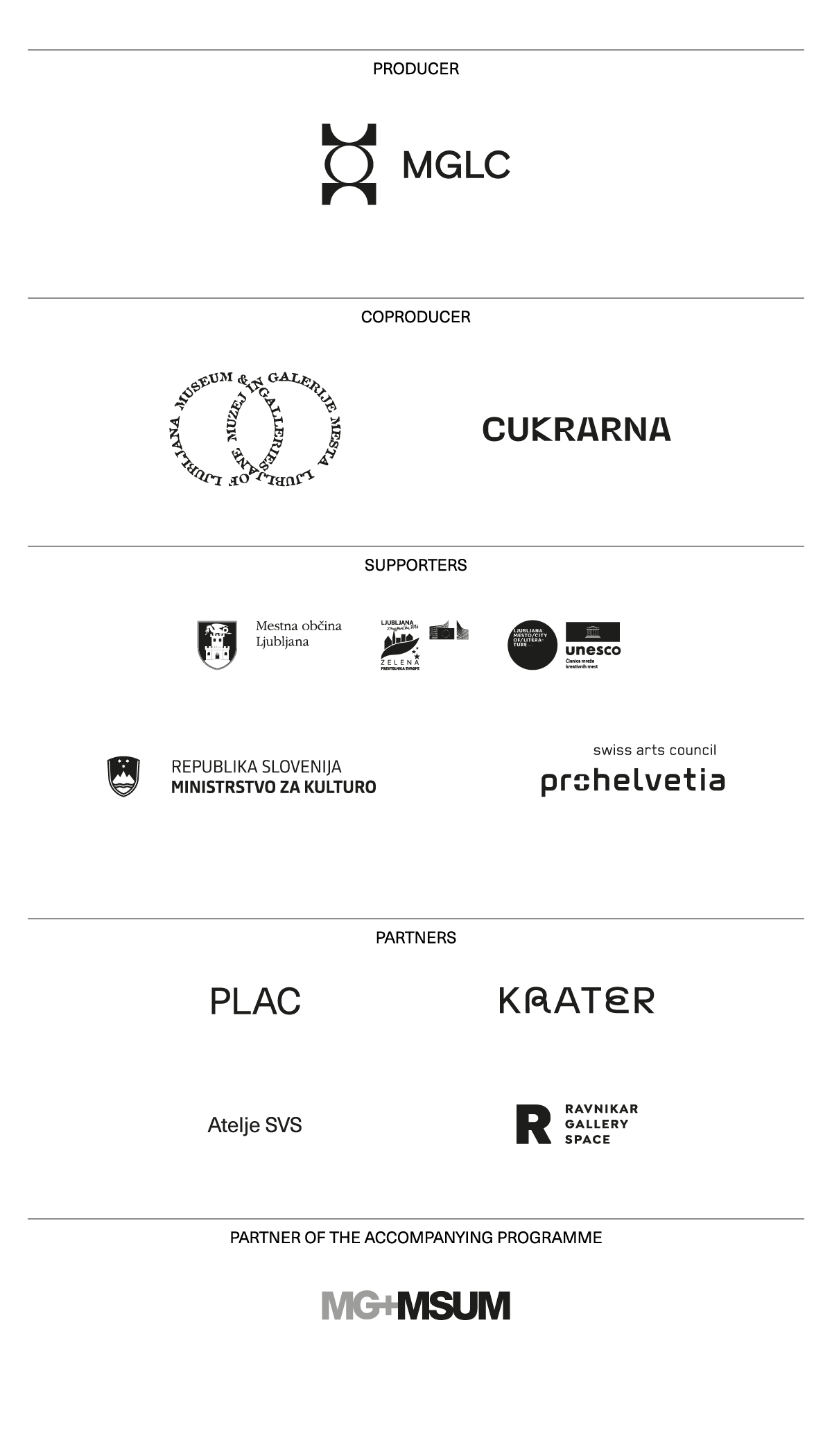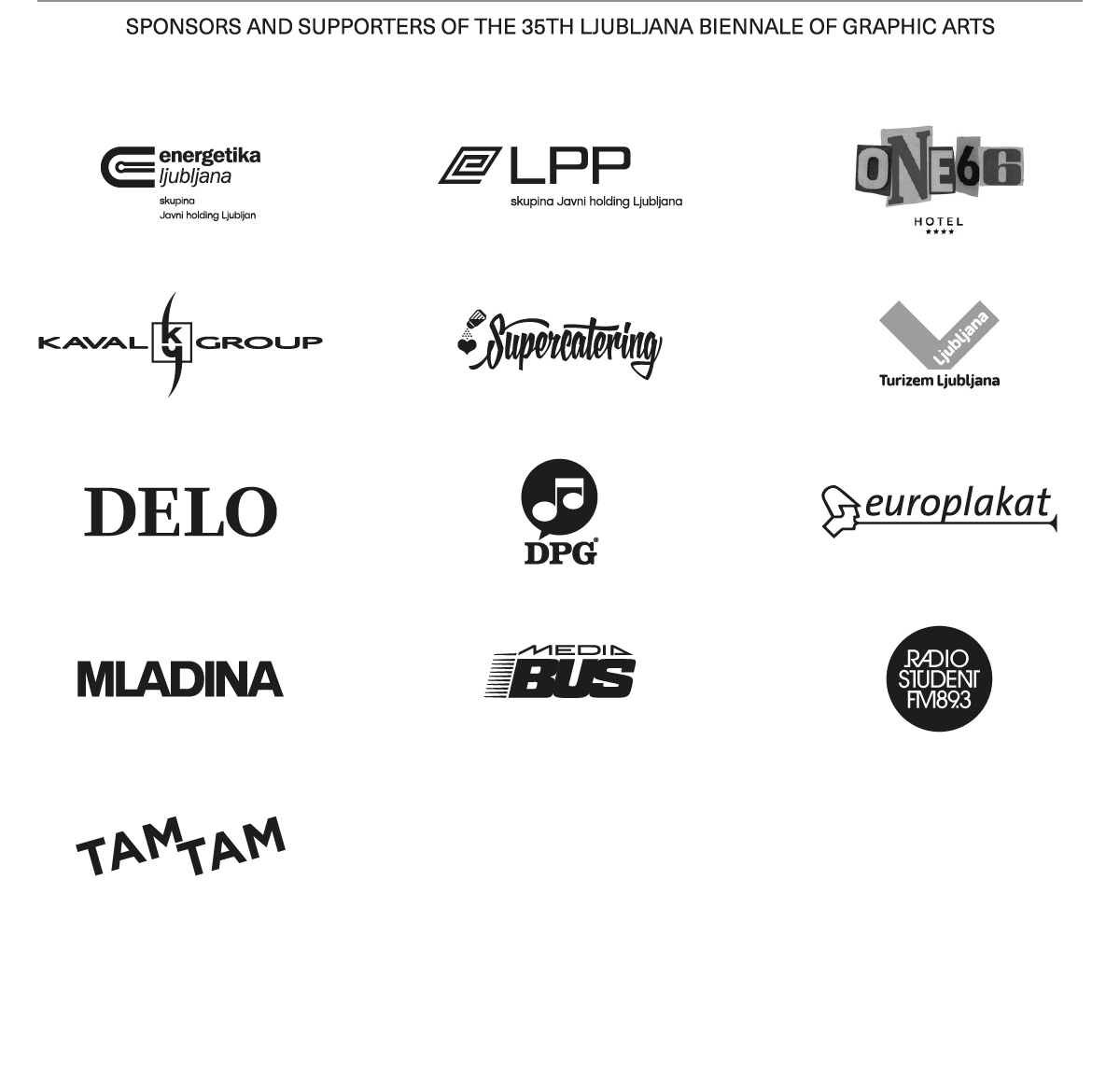Duba Sambolec
Triptych: After All / New Utopia / Homelessness Codex, 2007, indoor banner – each roll 34 x 400 cm (colour inkjet print – printer SII No. 2600 Seiko and Infotech inc., Japan IJM 663; for allkopi Netprint, Oslo, Norway, printed by Igor Failiullin), drawing (paper, Chinese ink, pastels, watercolour, turpentine) The Score #1 for Five Voices, 2009, indoor banner – 110 cm x 977 cm (inkjet print – printer SII No. 2600 Seiko and Infotech inc., Japan IJM 663; print: allkopi Netprint, Oslo, Norway,
Duba Sambolec has exhibited extensively in numerous solo and group shows, including the Aperto / Venice Biennale (1988) and the São Paulo Biennial (1985). She has received individual and emergency grants from the Pollock-Krasner Foundation and the Adolph and Esther Gottlieb Foundation, New York (USA).
At the Biennale, she presents a group of Scores from 2007/2009 that belong to the Situation Report body of work. These visual texts are banners, a possible manifesto of our time, inviting the audience to participate in a performance by reading them individually or aloud in a group.
The works are reminiscent of musical scores where silence – the dots – defines the formation of meaning and paces the comprehending rhythm.
After the end of the Cold War and the collapse of socialist Yugoslavia, the visual texts expose cultural characteristics of the socio-economic-political transition from the 1990s to the 2000s. The selected words are guidelines for the individual, and also emphasise the radical neoliberal capitalist values worldwide.
Scores help visualise the impact of profound social changes that affected Slovenian society and offer a subversive methodology to question collective behaviours. This series is also the performative legacy of the long-lost monumental sculptures Sambolec produced in the 1970s and 1980s at the Litostroj metal factory in Ljubljana and exhibited as a “self-organised outdoor installation” in Ljubljana. Some examples of this can be seen in archival photographs as footnotes and physical remnants of this disappeared opus. Embedded in a journey of dedication and effort that points to works that have historically been forced into immateriality, the Scores show Sambolec’s commitment to thinking about art as a shared space of understanding, where multi-media offer new ways of thinking about past and present.
B. 1949, Ljubljana, Slovenia. Lives and works in Ljubljana, Slovenia.
Anita Afonu
Sadik Kwaish Alfraji
Yasmina Benabderrahmane
Assadour Bezdikian
Max Cegielski and Janek Simon
Virginia Chihota
Galle Winston Kofi Dawson
Nolan Oswald Dennis
Nabil Djedouani
(DNLM) Danilo Milovanović
Jihan El Tahri
El Warcha in dialogue with PLAC – Participatory Ljubljana Autonomus Zone
Beti Frim and Ines Sekač
Helga Griffiths
Christian Guerematchi
Eric Gyamfi
Sonia Kacem
Mohammad Omar Khalil and Abed Al Kadiri (in dialogue)
Soghra Khurasani
Kolektiv Krater / Krater Collective
Kvadratni meter / Square Meter
Lalitha Lajmi
Malle Leis
Silvi Liiva
Kagiso Patrick Mautloa
Raul Meel
Amina Menia
Yussif Musah
Medhat Nasr Ali
Ilona Németh
noks collective
Nonument Group
NPR.
Henry Obeng
Temitayo Ogunbiyi
Thierry Oussou
Krishna Reddy
Tjaša Rener
Martyna Rzepecka
Duba Sambolec
Jaanus Samma
School of Mutants (Hamedine Kane, Stéphane Verlet-Bottéro)
Mori Sikora
Aldona Skirutyte
Sanaz Sohrabi
Tejswini Narayan Sonawane
Selasi Awusi Sosu
Sreda v sredo (SVS)
Tracy Naa Koshie Thompson
Marje Üksine
Tõnis Vint
Ala Younis
Lara Žagar
Manca Žitnik
The Print Portfolio of Artists of the 35th Ljubljana Biennale of Graphic Arts, The Holy Corner
International Centre of Graphic Arts
Grad Tivoli, Pod turnom 3
SI-1000 Ljubljana, Slovenia
t: +386 (0)1 241 3800




